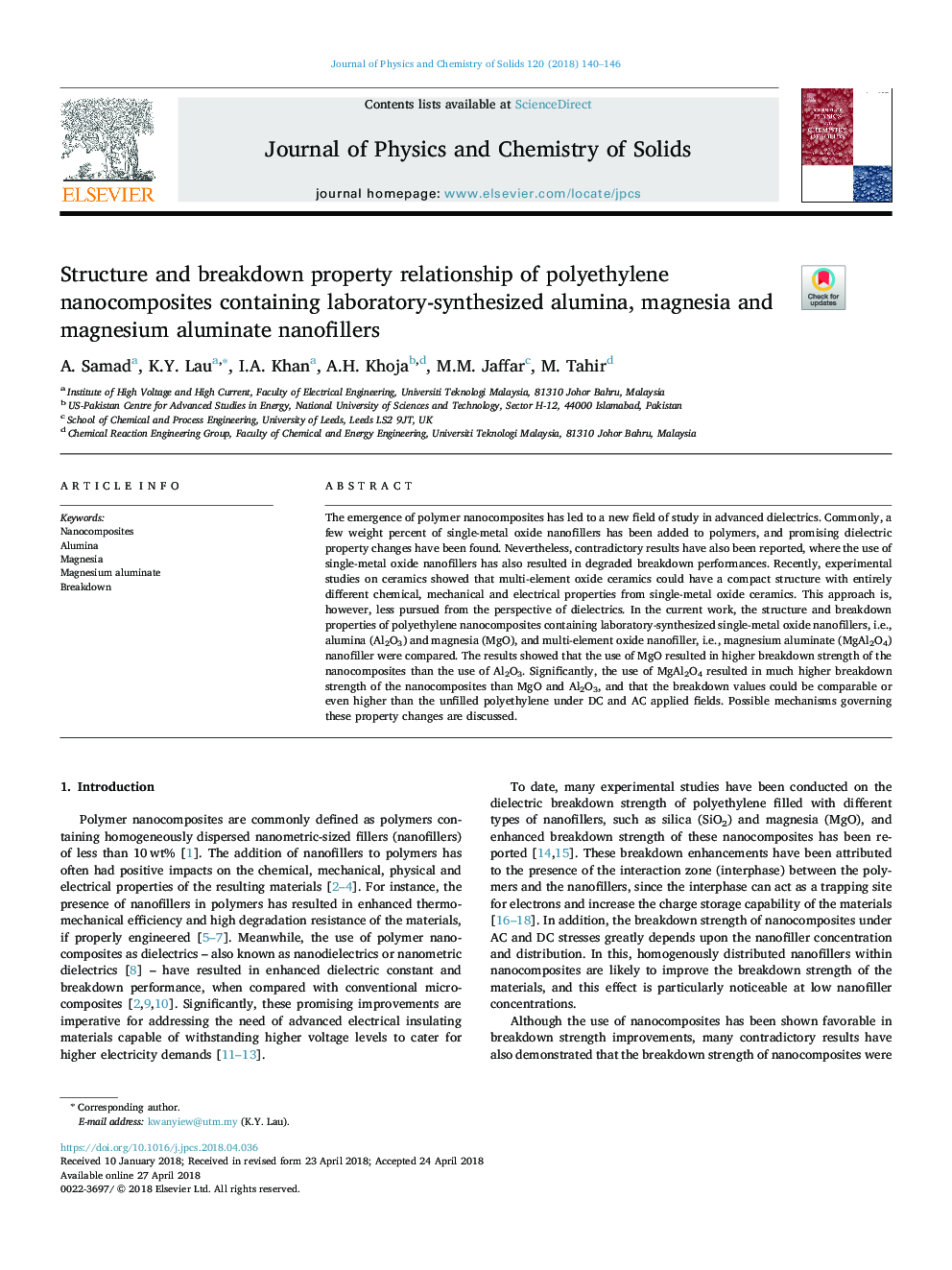| Article ID | Journal | Published Year | Pages | File Type |
|---|---|---|---|---|
| 7919989 | Journal of Physics and Chemistry of Solids | 2018 | 7 Pages |
Abstract
The emergence of polymer nanocomposites has led to a new field of study in advanced dielectrics. Commonly, a few weight percent of single-metal oxide nanofillers has been added to polymers, and promising dielectric property changes have been found. Nevertheless, contradictory results have also been reported, where the use of single-metal oxide nanofillers has also resulted in degraded breakdown performances. Recently, experimental studies on ceramics showed that multi-element oxide ceramics could have a compact structure with entirely different chemical, mechanical and electrical properties from single-metal oxide ceramics. This approach is, however, less pursued from the perspective of dielectrics. In the current work, the structure and breakdown properties of polyethylene nanocomposites containing laboratory-synthesized single-metal oxide nanofillers, i.e., alumina (Al2O3) and magnesia (MgO), and multi-element oxide nanofiller, i.e., magnesium aluminate (MgAl2O4) nanofiller were compared. The results showed that the use of MgO resulted in higher breakdown strength of the nanocomposites than the use of Al2O3. Significantly, the use of MgAl2O4 resulted in much higher breakdown strength of the nanocomposites than MgO and Al2O3, and that the breakdown values could be comparable or even higher than the unfilled polyethylene under DC and AC applied fields. Possible mechanisms governing these property changes are discussed.
Related Topics
Physical Sciences and Engineering
Materials Science
Electronic, Optical and Magnetic Materials
Authors
A. Samad, K.Y. Lau, I.A. Khan, A.H. Khoja, M.M. Jaffar, M. Tahir,
